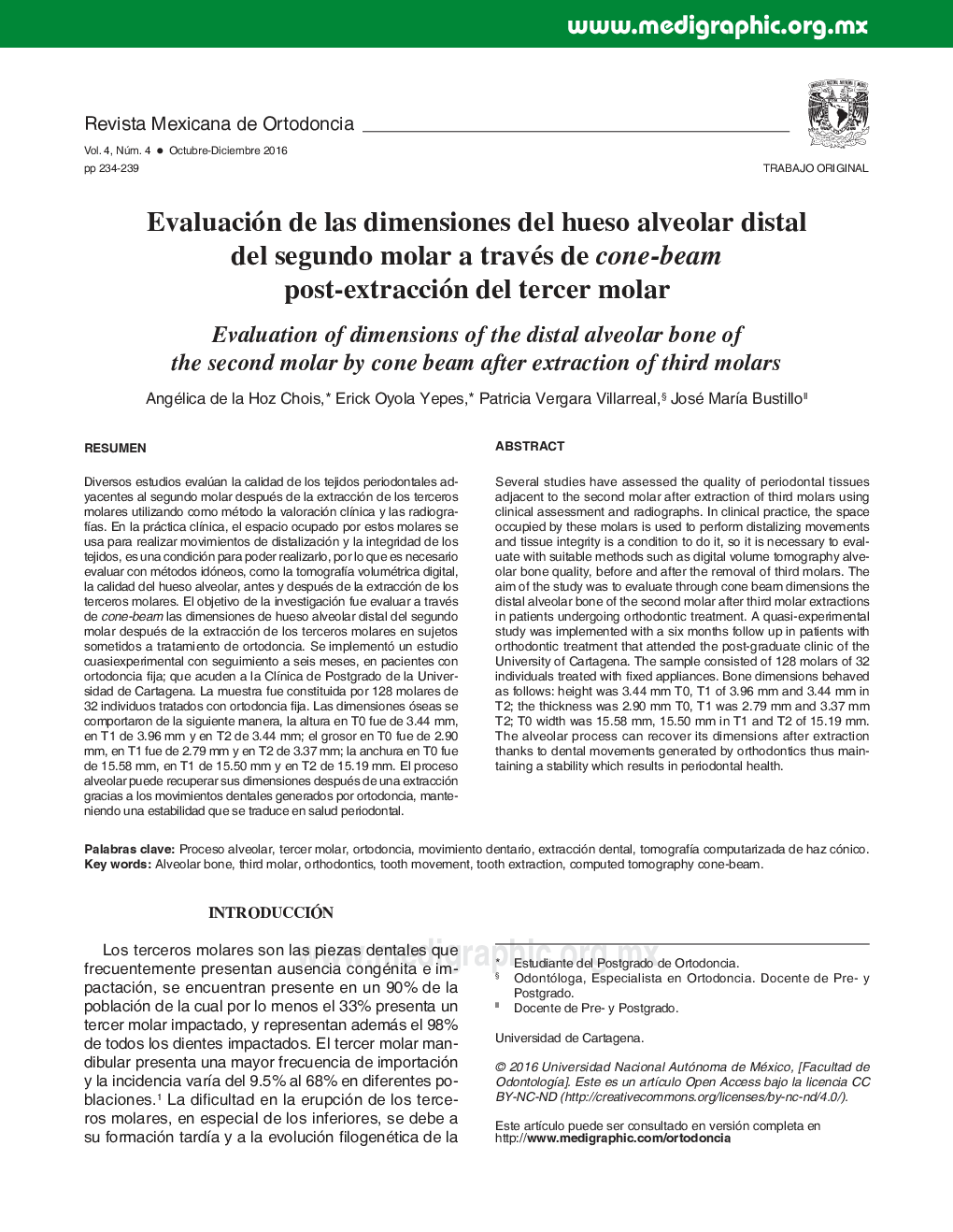| Article ID | Journal | Published Year | Pages | File Type |
|---|---|---|---|---|
| 8708394 | Revista Mexicana de Ortodoncia | 2016 | 6 Pages |
Abstract
Several studies have assessed the quality of periodontal tissues adjacent to the second molar after extraction of third molars using clinical assessment and radiographs. In clinical practice, the space occupied by these molars is used to perform distalizing movements and tissue integrity is a condition to do it, so it is necessary to evaluate with suitable methods such as digital volume tomography alveolar bone quality, before and after the removal of third molars. The aim of the study was to evaluate through cone beam dimensions the distal alveolar bone of the second molar after third molar extractions in patients undergoing orthodontic treatment. A quasi-experimental study was implemented with a six months follow up in patients with orthodontic treatment that attended the post-graduate clinic of the University of Cartagena. The sample consisted of 128 molars of 32 individuals treated with fixed appliances. Bone dimensions behaved as follows: height was 3.44Â mm T0, T1 of 3.96Â mm and 3.44Â mm in T2; the thickness was 2.90Â mm T0, T1 was 2.79Â mm and 3.37Â mm T2; T0 width was 15.58Â mm, 15.50Â mm in T1 and T2 of 15.19Â mm. The alveolar process can recover its dimensions after extraction thanks to dental movements generated by orthodontics thus maintaining a stability which results in periodontal health.
Keywords
Related Topics
Health Sciences
Medicine and Dentistry
Dentistry, Oral Surgery and Medicine
Authors
Angélica de la Hoz Chois, Erick Oyola Yepes, Patricia Vergara Villarreal, José MarÃa Bustillo,
